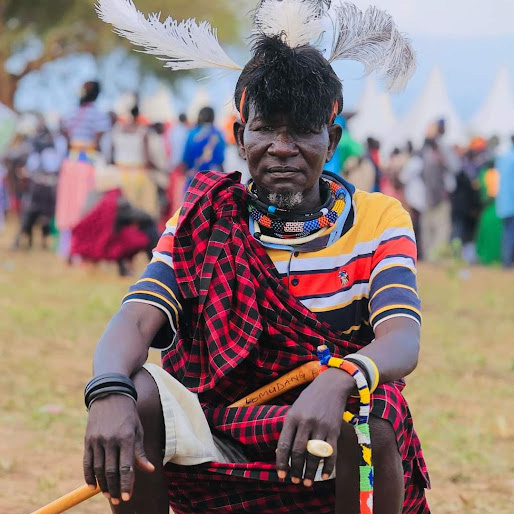Simply put: Imagine you’re a lion chasing down a zebra, or a hippo defending its turf in the river. The one thing you’ll need—more than speed or claws—is a strong bite.
Bite force is that estimated pressure an animal’s jaws can apply when they close it. It’s measured in pounds per square inch (PSI), and it tells us a lot about how animals eat, fight, and survive.
A powerful bite isn’t just about chomping down—it’s a tool for survival. For predators, a strong bite can break through thick hides or crush bones. For herbivores, it’s how they chew tough leaves or bark. It even plays a role in animal dominance, mating battles, and territory defense.
Several things influence how powerful an animal’s bite is:
This levels the playing field. A jaguar, for example, has a way higher BFQ than a lion—pound for pound, it bites harder.
There are three main ways scientists figure this out:
Bite force isn’t just about sharp teeth—it’s raw power, jaw structure, and survival strategy. Some animals use it to crush bones, others to hold slippery prey. Here are the top 15 animals with the strongest bite forces ever recorded, ranked from “ouch” to “unbelievable.”
Bite force tells the story of how an animal survives—whether that means slicing through meat, cracking bone, or holding onto prey. This list ranks the world’s strongest biters starting from the least PSI and climbing to the most crushing jaws nature has ever designed.
15. Leopard – 310 PSI
Leopards don’t need the strongest bite to be effective—they kill by stealth and precision. After suffocating their prey, they carry it up trees, often triple their own body weight, using their powerful neck and jaw muscles.
Their bite strength-to-size ratio is one of the most impressive in the cat world.
Leopards don’t need overwhelming force to kill—they rely on stealth and precision. Once they suffocate prey, they haul it into trees with powerful jaws and neck muscles, keeping it safe from scavengers.
Bite force: 310 PSI
Where to spot them: Serengeti, Kruger, Sri Lanka
Fun fact: Leopards can drag prey up to 3 times their body weight into trees
Safety tips: Avoid dense bushwalks without a guide—leopards ambush from above
14. Bulldog – 305 PSI
Domestic dogs don’t usually make lists like this, but the bulldog has a surprisingly strong bite for its size. They were originally bred for bull-baiting—requiring a locked-in jaw and short muzzle for breathing while holding prey.
Although modern bulldogs are docile, the strength remains. Their bite can easily crush bones or toys if they choose to exert it.
Though domestic, bulldogs pack a solid bite. Originally bred for bull-baiting, their short, stocky jaws are built to grip and hold. Modern bulldogs are much gentler—but the strength remains.
Bite force: 305 PSI
Where to spot them: Homes, show rings, parks
Fun fact: Bulldogs were bred to bite and breathe at the same time
Safety tips: Supervise small children when playing with large breeds
13. Lion – 650 PSI
The lion’s bite force is surprisingly lower than expected—but that’s nature. Also, probably because lions rely on group hunting, not just jaw power. They aim for the windpipe or neck and use weight and claw force to bring down prey.
The lion’s bite is strong enough to suffocate wildebeest or zebras, and in rare cases, crush the skull of a buffalo calf. But it’s the combination of power, coordination, and stamina that makes them top predators.
The king of beasts doesn’t rely on sheer bite strength—he relies on teamwork and technique. Lions bite the throat or nose to suffocate prey while others pin it down.
Bite force: 650 PSI
Where to spot them: Serengeti, Masai Mara, Okavango Delta
Fun fact: A lion’s bite can crack bone but is used mostly for finishing
Safety tips: Don’t camp alone in lion zones—males patrol quietly
12. Spotted Seal – 600 PSI
These small predators use their bite to snap up squid, fish, and crustaceans. Though cute, they deliver a powerful and painful clamp if threatened or handled.
Bite force: 600 PSI
Where to spot them: Arctic coasts, northern Japan
Fun fact: Spotted seals communicate with growls and slaps
Safety tips: Stay back—wild seals may bite when startled
11. Tiger – 1,050 PSI
Tigers rely on a stealthy stalk-and-strike approach. Their bite isn’t the strongest on this list, but it’s more than enough to puncture spinal cords and suffocate prey with a bite to the neck.
Bengal and Siberian tigers are the top biters in the cat world, combining stealth, muscle, and lethal jaw pressure into one elegant—but deadly—package.
Tigers have strong enough jaws to crush windpipes and puncture spinal cords. Their bite is built for stealth kills—not prolonged fights.
Bite force: 1,050 PSI
Where to spot them: India (Ranthambore), Nepal, Russia
Fun fact: They can drag prey weighing 500 kg
Safety tips: Never turn your back on a tiger; they prefer attacking from behind
10. Hyena – 1,100 PSI
The spotted hyena’s bone-crushing jaws are no joke and are built more like a bear than a dog, this scavenger-predator animal can shatter giraffe femurs, chew through skulls, and digest bones completely.
But they’re not just scavengers—hyenas are skilled hunters too, often working in clans to bring down wildebeests and antelopes. Their strong bite helps them access the nutritious marrow hidden inside bones, giving them a survival edge.
Bite force: 1,100 PSI (pound-force per square inch)
Where to spot them: Serengeti, Masai Mara, Kruger National Park
Fun fact: Their bite force strengthens as they age—pups have weak bites, but by adulthood, they can out-bite lions
Safety tips: Stay inside vehicles during safari nights—hyenas scavenge close to camps
9. Grizzly Bear – 1,200 PSI
Grizzlies may look like oversized teddy bears, but one snap from their jaws can crush a bowling ball. Their bite is used more for tearing apart carcasses or defending territory than hunting.
Grizzlies rarely attack unprovoked—but when they do, their combination of size, speed, and bite force is almost impossible to survive.
Grizzlies crush through carcasses, tree bark, and steel drums with their bite. They rarely bite humans unless provoked—but when they do, it’s devastating.
Bite force: 1,200 PSI
Where to spot them: Yellowstone, Alaska, Canada
Fun fact: Grizzlies can bite through bowling balls
Safety tips: Use bear spray and don’t hike alone—most attacks are surprise encounters
8. Gorilla – 1,300 PSI
Gorillas are mostly gentle giants who prefer leaves and fruit—but don’t mistake that for weakness. Their bite is designed to crush thick bamboo stems and bark. Their muscular jaws and sharp canines are fully capable of inflicting serious damage if threatened.
Silverbacks use displays more than violence, but their jaw strength makes them one of the top biters in the primate world.
Though mostly peaceful herbivores, gorillas can crack thick bamboo and tear bark using their jaws. Silverbacks defend with terrifying roars—and if they bite, it’s devastating.
Bite force: 1,300 PSI
Where to spot them: Bwindi (Uganda), Volcanoes (Rwanda)
Fun fact: Their teeth are adapted for plant chewing, not meat
Safety tips: Never challenge or mimic a silverback’s display—stay submissive
7. Jaguar – 1,500 PSI
Unlike other big cats, jaguars kill by biting directly through the skull—especially of caimans and large turtles.
Their compact frame holds immense power. If there were an Olympic event for bite strength per body size, jaguars would take gold.
Jaguar bites are short and brutal—they aim for the skull. Their bite isn’t just strong; it’s precise. They’re the only big cats that kill this way.
Bite force: 1,500 PSI
Where to spot them: Amazon, Pantanal wetlands
Fun fact: Their bite-to-size ratio is the strongest among big cats
Safety tips: Stick to guided tours in jaguar territory—most attacks happen near rivers
6. Hippopotamus – 1,800 PSI
The hippo’s bite can crack bones, split canoes, and snap crocodiles in half. Their tusks aren’t sharp—but their jaw pressure is immense. Hippos don’t eat meat, but their territorial aggression makes them deadly.
They use their bite in battles for dominance or against intruders. Surprisingly, they open their mouths to 150 degrees before clamping shut.
Hippos don’t eat meat, but they can bite a crocodile in half. Their massive tusks and jaw width give them incredible pressure—and they’re known to snap boats in two.
Bite force: 1,800 PSI
Where to spot them: Uganda, Botswana, Zambia, Tanzania
Fun fact: Hippos can open their mouths 150 degrees wide
Safety tips: Never block their path to water—this triggers most attacks
5. American Alligator – 2,125 PSI
Alligators snap their jaws shut with immense force, especially during ambush attacks. Once locked, they drag prey underwater in a death roll—a spinning move that tears flesh and limbs.
Despite this, alligators are generally shy unless provoked or fed by humans. Their bite is built for clamping, not chewing, so they often tear food apart.
With a bite strong enough to crack turtle shells and bones, alligators are masters of surprise. Once clamped, they roll and twist to rip apart prey.
Bite force: 2,125 PSI
Where to spot them: Florida, Louisiana swamps
Fun fact: They replace teeth constantly—up to 3,000 in a lifetime
Safety tips: Don’t swim in gator zones, especially at night or near docks
4. Great White Shark – ~4,000 PSI
This is where bite force meets terror. The great white shark’s jaws are built to cut through blubber, bone, and steel-like cartilage. Their serrated teeth act like saws, and their bite has been measured by computer models and dummy tests.
One clamp can take a seal in half. But shark attacks on humans are rare—and mostly due to mistaken identity.
The great white bite is like a living guillotine. With serrated teeth and shocking force, it cuts clean through flesh and bone. One clamp can amputate a seal in seconds.
Bite force: ~4,000 PSI (estimated)
Where to spot them: Australia, California, South Africa
Fun fact: Their jaws extend outward when they strike
Safety tips: Don’t swim in seal-rich waters or at dawn/dusk
3. Saltwater Crocodile – 3,700 PSI
This crocodile is Earth’s largest reptile—and its jaws are almost mechanical. One bite can splinter bones, boats, and buffalo legs.
Bite force: 3,700 PSI
Where to spot them: Northern Australia, Indonesia, Papua New Guinea
Fun fact: They ambush from below the surface
Safety tips: Stay 5+ meters from riverbanks in croc territory
2. Nile Crocodile – 5,000 PSI
Topping the chart is the Nile crocodile. This ancient predator’s bite is unmatched—5,000 PSI of sheer bone-snapping force. They clamp, twist, and drown prey with relentless power.
Nile crocs have been known to take down buffalo, antelope, and even lions that come to drink. One mistake near a riverbank can end in an instant
Nile crocs combine patience with terrifying bite power. They clamp, drown, and spin prey with force unmatched by any animal alive.
Bite force: 5,000 PSI
Where to spot them: Nile River, Lake Victoria, Selous
Fun fact: They’ve been known to prey on hippos and lions
Safety tips: Never swim or fish in known croc zones—listen to local warnings
1. Saltwater Crocodile (Honorable Tie)
The undisputed king of bite strength in the reptile world, the saltwater crocodile doesn’t just bite—it obliterates. With jaws built like hydraulic presses, they can crush turtle shells, bones, and metal boats with terrifying ease.
Saltwater crocs are ambush hunters. They wait motionless at the water’s edge and explode with speed, clamping down and initiating the “death roll” to drown and dismember prey.
Given the similarity in bite measurements between saltwater and Nile crocs, they share the top spot in many expert rankings. What makes the saltwater crocodile even more dangerous is its range—it lives in both saltwater and freshwater and can swim long distances.
Bite force: 3,700–5,000 PSI (varies by specimen)
Where to spot them: Southeast Asia, Northern Australia
Fun fact: Salties can go weeks without eating—and then gorge on a full deer
Safety tips: Do not approach water edges in croc territory, especially during nesting season
The bite force of these animals is very beneficial for their survival, from cracking bones to capturing prey, each species has evolved its jaws as a critical tool. Whether you’re deep in the jungle, wading a riverbank, or on safari, understanding which creatures bite hardest might just save your skin.
Bite force is more important than muscle—it’s evolution’s answer to survival. From stealthy skull crushers to aquatic ambush kings, these animals show that the most powerful tools in the wild are often hidden behind a calm stare… until it’s too late.
Give Us a call or arrange a meeting with one of our Travel Consultants to discuss more your Tanzania Safari Adventure



Made in Arusha - Tanzania :)
Copyright © 2026 Serengeti Mara Experts LLC All Rights Reserved